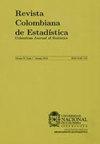Artificial Neuronal Networks: A Bayesian Approach Using Parallel Computing
Q3 Mathematics
引用次数: 1
Abstract
An Artificial Neural Network (ANN) is a learning paradigm and automatic processing inspired in the biological behavior of neurons and the brain structure. The brain is a complex system; its basic processing unit are the neurons, which are distributed massively in the brain sharing multiple connections between them. The ANNs try to emulate some characteristics of humans, and can be thought as intelligent systems that perform some tasks in a different way that actual computer does. The ANNs can be used to perform complex activities, for example: pattern recognition and classification, weather prediction, genetic values prediction, etc. The algorithms used to train the ANN, are in general complex, so therefore there is a need to have alternatives which lead to a significant reduction of times employed to train an ANN. In this work, we present an algorithm based in the strategy ``divide and conquer'' which allows to train an ANN with a single hidden layer. Part of the sub problems of the general algorithm used for training are solved by using parallel computing techniques, which allows to improve the performance of the resulting application. The proposed algorithm was implemented using the C++ programming language, and the libraries Open MPI and ScaLAPACK. We present some application examples and we asses the application performance. The results shown that it is possible to reduce significantly the time necessary to execute the program that implements the algorithm to train the ANN.人工神经元网络:一种使用并行计算的贝叶斯方法
人工神经网络(ANN)是一种学习范式和自动处理,灵感来自神经元和大脑结构的生物行为。大脑是一个复杂的系统;它的基本处理单元是神经元,神经元在大脑中大量分布,它们之间共享多个连接。人工智能试图模仿人类的一些特征,可以被认为是一种智能系统,它以与实际计算机不同的方式执行某些任务。人工神经网络可以用于执行复杂的活动,例如:模式识别和分类,天气预测,遗传值预测等。用于训练人工神经网络的算法通常是复杂的,因此需要有替代方案,从而大大减少训练人工神经网络的时间。在这项工作中,我们提出了一种基于“分而治之”策略的算法,该算法允许训练具有单个隐藏层的人工神经网络。使用并行计算技术解决了用于训练的通用算法的部分子问题,从而提高了最终应用程序的性能。该算法采用c++编程语言,利用Open MPI和ScaLAPACK库实现。给出了一些应用实例,并对应用性能进行了评估。结果表明,可以显著减少执行实现该算法的程序所需的时间来训练人工神经网络。
本文章由计算机程序翻译,如有差异,请以英文原文为准。
求助全文
约1分钟内获得全文
求助全文
来源期刊

Revista Colombiana De Estadistica
STATISTICS & PROBABILITY-
CiteScore
1.20
自引率
0.00%
发文量
0
审稿时长
>12 weeks
期刊介绍:
The Colombian Journal of Statistics publishes original articles of theoretical, methodological and educational kind in any branch of Statistics. Purely theoretical papers should include illustration of the techniques presented with real data or at least simulation experiments in order to verify the usefulness of the contents presented. Informative articles of high quality methodologies or statistical techniques applied in different fields of knowledge are also considered. Only articles in English language are considered for publication.
The Editorial Committee assumes that the works submitted for evaluation
have not been previously published and are not being given simultaneously for publication elsewhere, and will not be without prior consent of the Committee, unless, as a result of the assessment, decides not publish in the journal. It is further assumed that when the authors deliver a document for publication in the Colombian Journal of Statistics, they know the above conditions and agree with them.
 求助内容:
求助内容: 应助结果提醒方式:
应助结果提醒方式:


